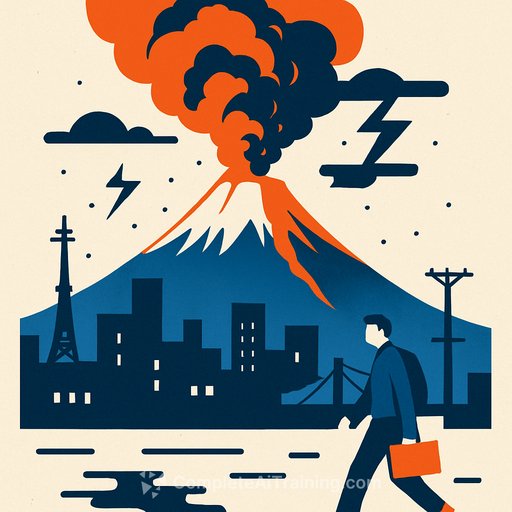Imagining the Aftermath of a Mount Fuji Eruption
More than 300 years have passed since Mount Fuji last erupted. The 1707 Hoei earthquake triggered that eruption, which expelled tons of volcanic ash into the atmosphere and covered Edo (now Tokyo), located over 100 kilometers away. Although the volcano has been quiet since, volcanologists confirm it will erupt again. While there’s no immediate threat, the Tokyo Metropolitan Government (TMG) is actively preparing citizens for potential impacts.
Recently, TMG released an AI-generated video illustrating possible scenarios if Mount Fuji erupts. The footage highlights the speed and scale of ash dispersion and its effects on Tokyo.
Potential Impact on Tokyo
The video warns that volcanic ash could reach Tokyo within one to two hours, depending on wind direction, eruption scale, and weather conditions. Even a small ash accumulation can disrupt transportation:
- Runways and railway lines may become unusable, grounding planes and halting trains.
- Driving conditions could become hazardous.
- Distribution of goods might be severely affected, leading to shortages.
Additionally, ash contamination could compromise water supplies and damage electric lines and cell towers, causing blackouts. The video also addresses health risks, including irritation of the eyes, throat, and nose.
This marks the first time TMG has used generative AI to visualize the fallout of a potential eruption, providing a clear, practical tool for public awareness and emergency planning.
Government Guidelines and Recommendations
Earlier this year, the Japanese government issued updated guidelines to help residents prepare. Key recommendations include:
- Sheltering at home during an eruption.
- Maintaining a two-week supply of essentials such as food, water, and medicine.
However, if volcanic ash accumulation exceeds 30 centimeters, wooden houses with low structural strength may collapse under the weight. In such cases, evacuation becomes necessary.
At a press conference on March 21, University of Tokyo professor Toshitsugu Fujii emphasized the importance of structural safety during heavy ash fall.
Preparing for the Future
Government officials and emergency management personnel can use this information to develop more effective response strategies. Understanding the speed of ash dispersal and its multifaceted impact on infrastructure, health, and logistics is crucial for minimizing disruption.
For those involved in public safety and emergency response, staying informed about AI applications in disaster simulations can enhance preparedness. Explore resources on AI-driven training and simulations at Complete AI Training.
As Mount Fuji remains a significant natural hazard, proactive planning and public education remain essential for protecting residents and maintaining essential services.
Your membership also unlocks:





